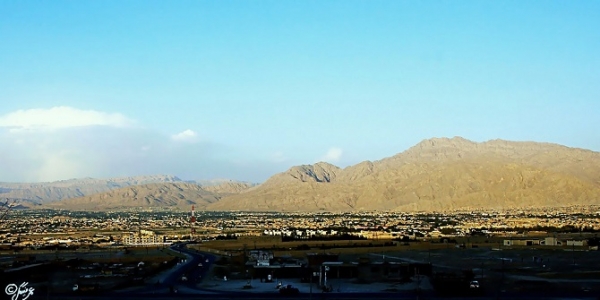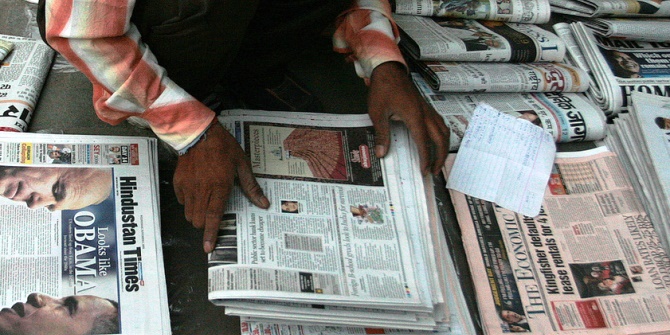Following the attack on a police training college in Quetta, Sajjan Gohel discusses the security challenges in Balochistan and the wider implications for Pakistan. He writes that given that the province is important to broader regional peace it should be accorded more attention in academic and policy discourse.
Over the last few months violent acts of militancy in Balochistan, Pakistan’s western province, along with the intransigence of the Pakistani military, threaten to further fuel an already present Baloch insurgency which could have disastrous repercussions for security in Pakistan as well as economic, political and social consequences.
On 24 October 2016, three armed militants carried out an attack on a police training college in Quetta, part of the Balochistan province of Pakistan. 61 cadets were killed and more than 165 injured. The attack was one of the bloodiest incidents in the province in recent years. Confusion remains as to who actually carried out the attack. The security challenges in Balochistan, let alone Pakistan, are often complicated, murky and at times difficult to unravel.
Wilayat Khorasan in Balochistan
Wilayat Khorasan, the ISIS affiliate in Afghanistan and Pakistan, claimed responsibility for the siege at the cadet college through ISIS’s own news agency, Amaq. Strangely, the Pakistani military had stated that the Sunni Muslim sectarian group Lashkar-e-Jhangvi (LeJ) was responsible and then amended the story to say that Wilayat Khorasan had ‘outsourced’ the attack to LeJ but as of yet, no evidence has been provided of their connection to the attack. Logistically, it would also be a challenge for the LeJ as they have been based in Pakistan’s Punjab province and no proven track-record of operating in Balochistan.
Wilayat Khorasan on the other hand has graphically illustrated its presence in Balochistan. On 8 August, 2016, it claimed responsibility for the attack on a hospital in Quetta with a suicide bombing and shooting resulting in the death of 70 people. Responsibility was also claimed by Jamaat-ul-Ahrar, formerly part of the Tehrik-e-Taliban Pakistan (TTP) and currently sympathetic towards ISIS. Quetta, the provincial capital of Balochistan, is also the hub for the Afghan Taliban in Pakistan, also known as the Quetta Shura Taliban.
The membership of Wilayat Khorasan largely comprises of former members of the TTP. This has enabled the group to maintain a strong presence in the tribal areas of Pakistan, especially as the leadership is predominantly Pakistani-Pashtun, even though they try to portray their Afghan ties.
The modus operandi of Wilayat Khorasan’s attacks have been to focus on targeting Afghan state institutions and Afghan civilians as well as the Pashtuns and Balochis of Pakistan. Curiously, the presence of the Pakistani military in Balochistan and the tribal areas has not resulted in any attacks against them, as yet. The Pakistani military’s Operation Zarb-e-Azb in North Waziristan was identified as being successful in breaking the back of the TTP, yet rather than eliminate the militants, it displaced countless civilians and pushed many militants into Afghanistan. Consequently, the violence orchestrated by groups like Wilayat Khorasan, against Afghans and Pakistan’s ethnic minorities, goes on unabated.
Circumstances of the attack
On 31 October, 2016, Wilayat Khorasan were behind a suicide attack in Jalalabad, Afghanistan, targeting local tribal elders of the Pacher Agam district where the terrorist group is actively operating. Several people were killed in the incident. There are growing concerns that Wilayat Khorasan are trying to establish a foothold in the strategic Tora Bora area which is located near Pacher Agam.
In a twist of fate, the Balochi cadets who were killed at the Quetta police college, had graduated several months previously but were summoned back to the college by the state authorities days before the attack and confined to the barracks. Inevitably, many of them were subsequently killed in the raid on the cadet college, wiping out a generation of young Balochis most of whom were from the Turbat and Panjgur districts of Balochistan. Some Pashtuns cadets were also killed.

Ironically, the attack also highlighted the overall lack of a security apparatus at the cadet college, despite it being a sensitive facility. It is situated on Quetta’s Saryab Road which has witnessed a high volume of violent incidents over the past few years. Even the cadet compound area had been targeted before. Part of the college’s perimeter compound consisted of mud walls which for years urgently needed to be replaced with a more secure and fortified wall. Furthermore, the cadets who had graduated and became police officials were unarmed and did not have access to weapons to defend themselves when the attack happened.
It remains to be seen whether the head of the Joint Investigation Team looking into the attack, Brigadier Bilal Ali, of the army, will be able to address the security flaws and make recommendations that will be enacted upon in order to avoid another tragedy. There has been some criticism of Ali’s appointment as he is a Punjabi and therefore the perception by some Balochis is that his eventual report could be whitewashed. The Baloch people are an ethno-linguistic group dispersed between Pakistan, Afghanistan and Iran. In Pakistan, relations between Baloch and the central government, and more so with the military, have been truculent since the creation of Pakistan in 1947, sporadically turning violent.
Tensions between government and military
Events in Balochistan coincide with what appears to be deteriorating relations between Prime Minister Nawaz Sharif’s government in Islamabad and the military led by Raheel Sharif. The cadet college siege has been seized on by Nawaz Sharif’s political enemies to discredit his central and provincial Pakistan Muslim League-Nawaz (PML-N) governments, especially as the attack was on the police which falls under the government’s Interior Ministry. Prior to this, the military had accused the PML-N of leaking a story to the reputed Pakistani journalist, Cyril Almedia, over a meeting at the All Parties’ Conference in October which was chaired by Nawaz Sharif and attended by senior members of the Pakistani military establishment including the Director-General of the Inter-Services Intelligence (ISI) agency, Rizwan Akhtar.
Nawaz Sharif warned the military for selectively targeting militants in Pakistan, whilst ignoring the clandestine activities of some, which could result in Pakistan’s international isolation. The government also didn’t want the military to interfere with police actions against militant groups. Lastly, Nawaz Sharif wanted to re-start relations with India that have been fraught recently, by dealing with India’s concerns of cross-border militancy.
Although the Prime Minister Office publicly rejected the contents of Almeida’s story, the military clearly did not appreciate the assertions in his article and subsequently added Almeida to the Exit Control List, preventing him from traveling abroad. The fall-out continued as Parvaiz Rasheed, the Information Minister, was forced to resign.
Despite the restoration of democracy in Pakistan after the departure of General Pervez Musharraf in 2008, the military remains the dominant authority on Pakistan’s security, especially in Balochistan and the tribal areas, and pays little heed to the directives of the civilian government. In 2004, another Baloch insurgency erupted which was further fuelled after the military killed the leader of the Baloch Bugti tribe, Nawab Akbar Bugti in 2006. The transition from the military government of Pervez Musharraf to the civilian government of President Zardari in 2008 and Prime Minister Nawaz Sharif in 2013 has done little to assuage Baloch discontent.
Economic and political marginalisation
Another important dynamic is economic inequality in Balochistan which is the poorest and least developed province in Pakistan. Balochistan retains the highest poverty rate as well as the highest infant and maternal mortality ratios along with the lowest literacy rate in Pakistan. Yet Balochistan is extremely rich in mineral wealth with silver, copper, chromite, sulphur, marble, iron ore, quartzite, limestone, coal and natural gas. The natural gas is called Sui gas because it comes from the district of Sui in Balochistan but it is extracted and used more in other parts of Pakistan than for Balochistan itself contributing to claims of resource exploitation and the province’s economic deprivation.
The Baloch are also marginalised politically since there are barely any in the central government and especially in the military. Unsurprisingly, many Baloch view the insurgency as an act of desperation against the Punjabi-dominated military. The bureaucracy of Balochistan also has more Punjabis than Baloch despite the fact that the Punjabi’s are only a fraction of the population.
Balochistan has the potential to become a key energy corridor and transit route for international trade. Yet violent incidents in Balochistan and the political and socio-economic disenfranchisement of the Baloch will inevitably contribute to undermining the China-Pakistan Economic Corridor (CPEC), where the entry-point begins at the deep-water port of Gwadar in Balochistan. Ever since it was announced in April, 2015, CPEC forms part of an extension of China’s ambitious One Belt, One Road initiative, and is seen as a vital economic lifeline for Pakistan’s future. However, many of the infrastructure projects are in danger of being delayed or suspended because of the security concerns the Chinese have expressed. Pakistan’s Chief of Army Staff, General Raheel Sharif said the attacks in Quetta are aimed at hurting the planned China-Pakistan Economic Corridor (CPEC). Although Balochistan is key to CPEC, Quetta is in fact outside the route of CPEC.
The situation in Balochistan too often goes without notice by the international community. That is partly because reporting within Pakistan has been restricted and as a result, a limited number of details of the twelve-year-old Baloch insurgency are in the public mainstream. Some Pakistani commentators have openly spoken about the events in Balochistan. The renowned journalist Hamid Mir, who had interviewed Osama bin Laden, survived a drive-by shooting in Karachi in 2014 after he wrote an article about the situation in Balochistan.
However, prominent human rights activist, Sabeen Mahmud, was not so fortunate. Mahmud, who had organised a seminar about Balochistan, was shot dead in Karachi on 24 April, 2016. The militant group Jundallah, which is affiliated with Wilayat Khorasan, was blamed for Mahmud’s assassination. Jundullah was also behind the May 2015 Karachi bus shootings of Ismali Shiite Muslims in which 46 people were killed. Some Pakistani human rights activists claim that the notorious militant Zakria Hasni was allegedly involved in Mahmud’s death. Either way, the attacks on Mahmud and Mir illustrate why Karachi is regarded as one of the most dangerous cities in the world.
It is also interesting that Wilayat Khorasan, Jamaat-ul-Ahrar, and Jundullah have all been involved in either targeting minorities such as the Balochis or people that have spoken about Balochistan. This would not be seen as the immediate priority for ISIS and its Middle Eastern affiliates whose tend to focus on military and governmental targets in Syria, Iraq, Libya and Egypt. Yet the affiliates in Pakistan have avoided that.
Conclusion
By examining the dynamics in Balochistan and its implications for Pakistan, it is clear that whilst the Baloch issue continues to be dealt with by the military over and above the elected civilian government, the chances for a peaceful resolution to the insurgency are improbable in the near future. As such, intermittent attacks between the state and the Baloch will continue for the foreseeable future whilst the lines of who the actual perpetrators are will remain blurred as in the case of the role of groups like Wilayat Khorasan. The Balochistan issue is important to regional peace and security and therefore necessitates more attention within academic, media and policy circles.
This article gives the views of the author, and not the position of the South Asia @ LSE blog, nor of the London School of Economics. Please read our comments policy before posting.
About the Author
Sajjan Gohel is International Security Director at the Asia-Pacific Foundation, Senior Advisor to the multilateral Partnership for Peace Consortium’s Combating Terrorism Working Group and a Visiting Teacher in the International History Department at the LSE. Read his previous South Asia @ LSE posts here.







